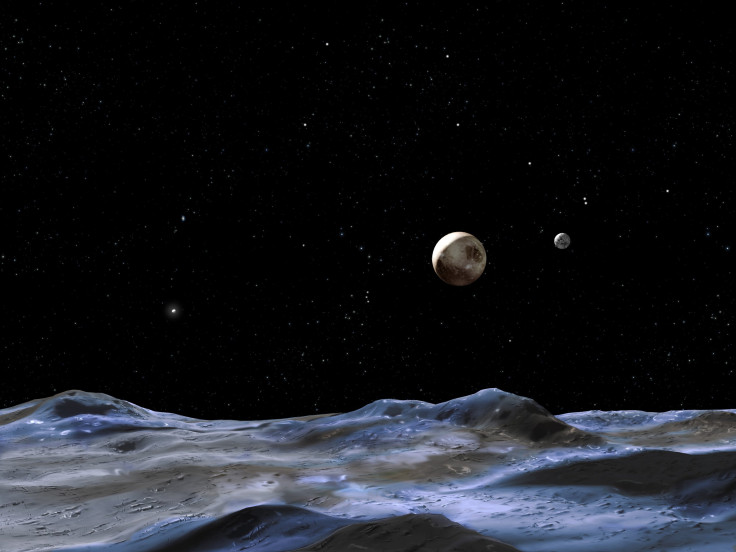Pluto’s Icy Moon Charon May Have Had An Underground Ocean: NASA

If it is proved that Charon, Pluto’s giant moon, has cracks on its surface, further analysis of those fractures could eventually lead the conclusion that the celestial body’s interior was once warm enough to sustain an underground ocean of liquid water, according to a new study conducted by NASA.
Observations of both Pluto and Charon have been very challenging for astronomers due to their remoteness. However, NASA's New Horizons spacecraft, which will visit Pluto and Charon in July next year, is expected to provide new details about the solar system’s farthest planet and its moon.
“Our model predicts different fracture patterns on the surface of Charon depending on the thickness of its surface ice, the structure of the moon's interior and how easily it deforms, and how its orbit evolved,” Alyssa Rhoden of NASA and the study’s lead author, said in a statement. “By comparing the actual New Horizons observations of Charon to the various predictions, we can see what fits best and discover if Charon could have had a subsurface ocean in its past, driven by high eccentricity.”
Scientists have found evidence of water on some moons, such as Jupiter's moon Europa and Saturn's moon Enceladus, with cracks on their surface. According to them, large tides generated on Charon's surface in the past might have caused friction that eventually led to surface fractures.
“Depending on exactly how Charon's orbit evolved, particularly if it went through a high-eccentricity phase, there may have been enough heat from tidal deformation to maintain liquid water beneath the surface of Charon for some time,” Rhoden said in the statement. “Using plausible interior structure models that include an ocean, we found it wouldn't have taken much eccentricity (less than 0.01) to generate surface fractures like we are seeing on Europa.”
Charon's orbit is now on a stable course that is not likely to generate significant tides, meaning that any ancient underground ocean may be frozen by now, Rhoden added, based on observations from telescopes.
Although liquid water is considered a necessary ingredient for life, there are other important elements such as a useable energy source, carbon, nitrogen and phosphorus that also contribute to the formation of life. Scientists will depend on the observations by New Horizons to determine whether all these ingredients were present in the ancient ocean that may have existed beneath Charon.
“This research gives us a head start on the New Horizons arrival – what should we look for and what can we learn from it. We're going to Pluto and Pluto is fascinating, but Charon is also going to be fascinating,” Rhoden said.
© Copyright IBTimes 2024. All rights reserved.












